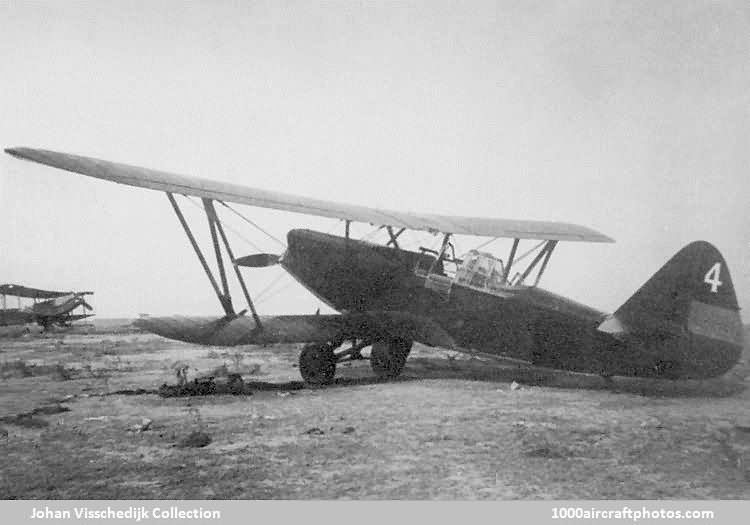05/15/2013. Remarks by Johan Visschedijk: "The R-Z was developed at instigation of A.M. Byelinkovich, director of GAZ-1, under chief engineer Ye.P. Shyekunov, and was the last in the R-5 line. Design of the type was started in 1933 by Markov and Skarbov, of Tupolev. The fuselage was redesigned with modern wood monocoque structure, deeper section with larger cockpits and larger tanks. The cockpit of the pilot was half-closed with folding glass panels and the observer/gunner was located under a hood, consisting of a fixed and a movable part.
Power plant was an 800 hp Mikulin M-34N twelve-cylinder V-engine with a more efficient radiator behind the landing gear. The tail was redesigned and of larger area with balanced surfaces without horns, and the trailing edge cutout in the center section of the upper wing was deleted. The main landing gear had wheels with brakes and 31.50x7.87 in (800x200 mm) low-pressure tires, initially covered with spats, thereafter left open.
First flight was in January 1935, showing superior handling over the R-5, and was soon accepted for Soviet AF service. A total of 1,031 were built at GAZ-1, production terminating in the spring of 1937. Armament consisted usually of a fixed 0.30 in (7.62 mm) PV machine gun, and one or two movable 0.30 in (7.62 mm) ShKAS machine guns. A bomb load up to 992 lb (450 kg) could be carried under the lower wing, eg: two 276 lb (125 kg) FAB-125 bombs and four 110 lb (50 kg) FAB-50 bombs.
The sturdy-looking R-Z was serving well against the Japanese in the Far East in 1939, and numerous were still in service during the German invasion in 1941. The Spanish Republic AF acquired 62 aircraft in 1937, and the pictured aircraft served with 1 Escuadrilla, Grupo 20 in the Civil War (July 17, 1936 to April 1, 1939). After the end of the hostilities, 36 were operated by the Spanish Nationalists AF. The Spanish nicknamed the type "Natacha"."
